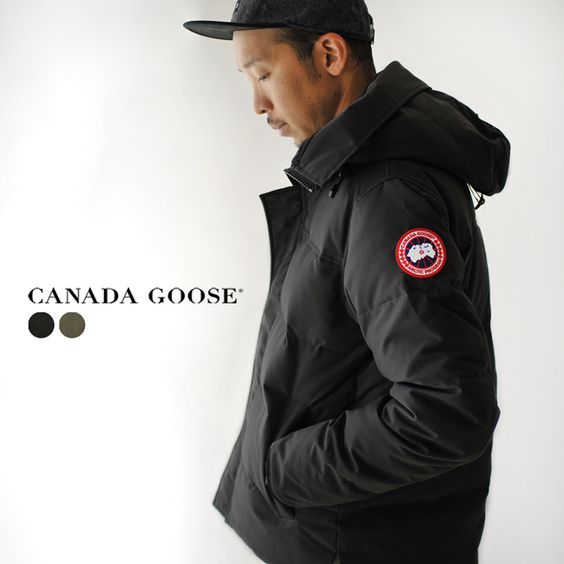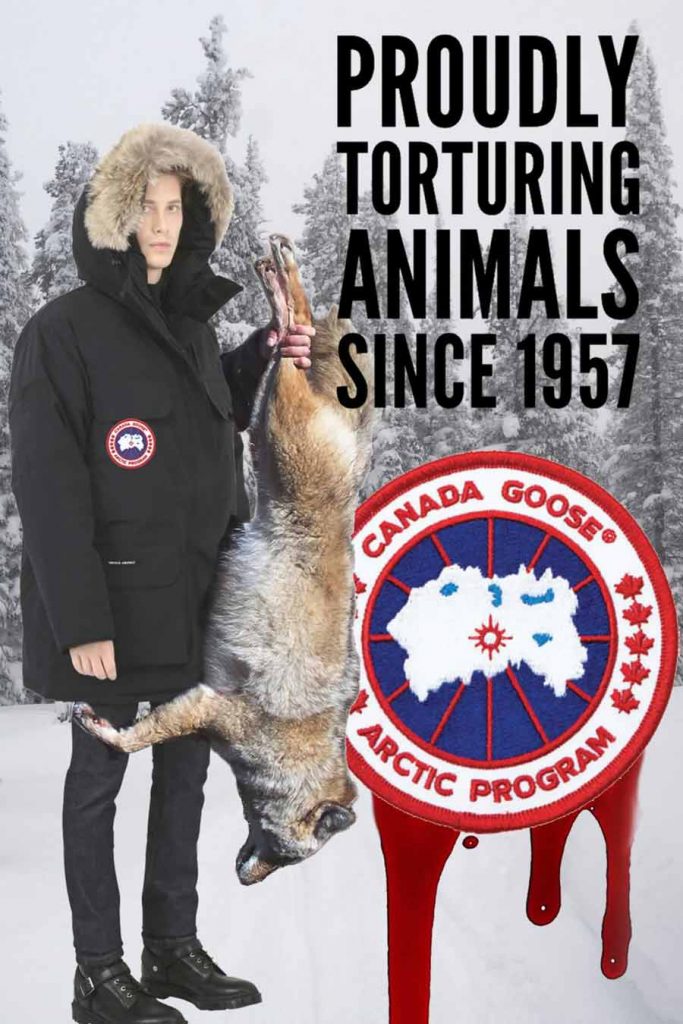BRAND POINT OF VIEW – Protests and Ethical Living
Canada Goose become one of the most popular brands for winter wear. The company was founded in 1957, by Sam Tick which start the company under a different name being orientate in producing sport wear and raincoats. In 1970 David Reiss, Sam Tick’s son-in-law, became partner and he start to work on a new era of Metro Sportswear which has been launched with a great invention of a volume-based down filling machine. David also establishes the label Snow Goose. Canada Goose has grown into one of the world’s leading makers of luxury apparel.

The retail price of their product are more above the average, for the men’s collection the prices are between $350 and $1550. But even like that the customers seems to be willing to pay, last year when it open a new store in Beijing the line of customer waiting snaked down the street. (Canada Goose plans to operate 20 stores globally by 2020.)
As popular as they are, they also receive negative reactions to the brand from the public. Their use of natural fur and down fillings for their jackets are not appreciated by everyone. In today’s world, now, more than ever, the public are more conscious towards the ethical practices of brands. Protecting the planet and animals is high on the agenda and has a strong impact on the luxury industry.

In Euromonitor International’s 2017 global consumer trends survey, 65% of respondents state they try to be ethical and to have a positive impact on the environment through everyday actions, and over 60% are very or extremely influenced by friends and peer-to-peer opinions on social media.
Social Media a great tool of our days, but doesn’t always work in favour for brands. Interacting with consumers, and the demographic they strive to attract, they also can’t avoid angry consumers and activists in their pursuit to be heard, and ambition to damage the brand. Brands are now leaning towards creating more eco-friendly and ethical images from the beginning of the manufacturing process, through to items reaching consumers, and even with the treatment of unsold clothes.

Even with evidence on their official website of ethical approach in the process of production the loud crowd doesn’t seems to be happy. Now for almost 7 years different action has been made against the brand quite often. It has been created a platform against the brand where people are encourage online to reject and blame the brand for their “cruelty” against animals.

PETA is the name of the campaign created in aversion to the brand, it has been campaigned relentlessly against Canada Goose through-out North America and Europe. They protest in numbers at each store opening. They believe Canada Goose, in pursuit of profit, are guilty of animal cruelty.
These mass demonstrations are applying pressure in the public domain, for the brand to enact serious changes to the way they operate and make their products. Further proof that perhaps today’s generation will not accept the traditional ways of crafting and the heritage of the brand. The brand’s image is undoubtedly suffering as a side effect of the negative press. Losses in terms of customers, sales, value etc.
The latest action which has been taking place was in September 2019, PETA protesters flanked the red carpet of Toronto International Film Festival sponsored by Canada Goose. This being a very strategic move, stopping the brand to create connections and collaborations with other brands, companies, events etc.


In March this year the CEO of the company Dany Reiss had been visit by a group of protesters to his home address with the message of “ Reiss stop selling jackets that contain fur and down immediately”.

And one of the most shocking appearance in the public was in October 2019 when dozens of protesters joined the topless activists with the message: “Canada Goose Kills” written on their chest , making sure that the message has been difficult to ignore by the customers of the brand.


But it seems that the brand is not willing to change to a more ethical production process. Even after all of this actions which has been made for 7 years every few months against the brand. Maybe the brand can use this phenomenon as an anti-promotion campaign which seems to work quite well if the customers are still devoted to the brand.
References:
Ethical Fashion: How to Meet Industry Needs and Demands by Marguerite Le Rolland , April 5, 2018, Euromonitor: https://blog.euromonitor.com/ethical-fashion-meet-industry-needs-demands-2/
Canada Goose website: https://www.canadagoose.com/uk/en/our-history.html
Newsweek by Eve Watling Feb 14, 2019: https://www.newsweek.com/are-canada-goose-jackets-unethical-controversy-explained-1329557
Peta US website:https://www.peta.org.uk/features/canada-goose-down-jackets/
Pinterest: https://www.pinterest.co.uk/search/pins/?q=canada%20goose%20logo&rs=typed&term_meta[]=canada%7Ctyped&term_meta[]=goose%7Ctyped&term_meta[]=logo%7Ctyped